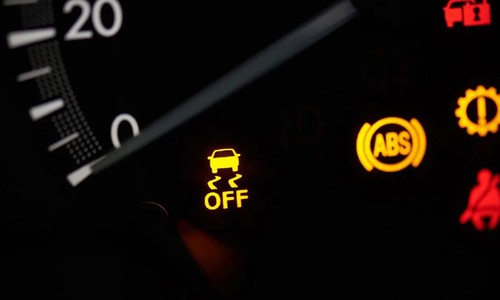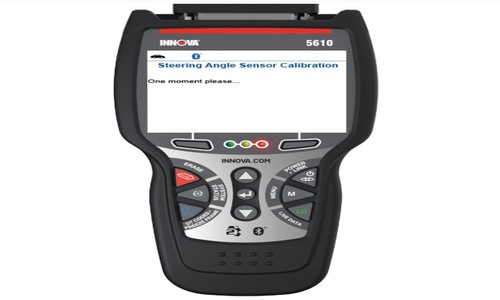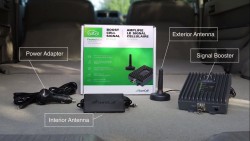C1290 Error Code: Abnormal zero point of steering angle sensor
The C1290 error code indicates a problem with your steering angle sensor's zero calibration. It usually triggers your traction control and ABS warning light. There are a lot of error codes that can be produced by your car and the C1290 is one of these codes. When this code is triggered in your car, it means that there is an angle malfunction with your car’s steering angle sensor. The specific malfunction is an abnormal zero point of the steering angle sensor.
Just getting started, you don’t need to worry. This article explains the steering angle sensor to help you understand the c1290 error code better, then we briefly explain the causes of this code, the symptoms associated with it, and how you can troubleshoot this code.
Steering angle sensor
The steering angle sensor is a part of the electronic stability control (ESC) and it is responsible for providing sending information about the steering activities to the electronic control module (ECM). This component is responsible for the direction of a driver as it aligns the position of the steering wheel to the position of the wheels. The two main pieces of information the steering angle sensor (steering angle sensor) sends to the ESC is the angle and direction of the steering and wheels. Another major function of the steering angle sensor is to measure and report how fast the steering is being turned.
Two types of steering angle sensors are:
- Analog - uses voltage difference to measure steering angle and wheel direction
- Digital - uses LED light to measure steering angle and wheel direction
Causes of the C1290 error code
The zero-point calibration of the steering angle sensor signifies a baseline for accurate measurement in this component. The C1290 code is triggered when the zero calibration of this sensor is incorrect or abnormal.
Some reasons why this can occur include:
Acceleration sensor and yaw rate and zero point calibration incomplete
The yaw rate sensor is responsible for measuring your car’s angular velocity along a vertical axis in degrees or radians per second while the acceleration sensor is responsible for measuring your car’s acceleration. When the zero-point calibration of these sensors is incomplete, the C1290 error code is triggered. This incomplete calibration can be due to skipping some calibration steps, insufficient calibration points for reference, insufficient calibration frequency, and inadequate calibration environment.
Poor adjustment of the steering wheel center position
Having your car’s steering wheel in a centered position ensures balance. This position is important to ensure that your wheels are in a neutral position and it indicates that your car wheels are properly aligned. Incorrect wheel alignment is associated with a non-centered steering wheel and this can lead to your tires wearing out quickly. Non-centered steering wheels are usually caused by wheel misalignment and other malfunctions relating to the braking and wheel system.
Poor adjustment of the front wheel alignment
When adjusting your front wheel alignment, you are altering the suspension of your car to affect the angle and direction at which your tires make contact with any surface. Wheel alignment is important for the driver’s safety and the extension of the service life of your car tires. When the alignment of your front wheels is not carried out properly, the C1290 code will be triggered.
Incorrect wheel alignment is associated with a non-centered steering wheel and this can lead to your tires wearing out quickly. Non-centered steering wheels are usually caused by wheel misalignment and other malfunctions relating to the braking and wheel system.
Poor adjustment of the steering wheel center position
Having your car’s steering wheel in a centered position ensures balance. This position is important to ensure that your wheels are in a neutral position and it indicates that your car wheels are properly aligned.
Incorrect wheel alignment is associated with a non-centered steering wheel and this can lead to your tires wearing out quickly. Non-centered steering wheels are usually caused by wheel misalignment and other malfunctions relating to the braking and wheel system.
Two types of steering angle sensors are:
- Analog - uses voltage difference to measure steering angle and wheel direction
- Digital - uses LED light to measure steering angle and wheel direction
Symptoms of the C1290 error code
You may experience some unusual symptoms in your car when this code is triggered. Some of these symptoms include:
The traction control light or check engine light is on

The traction control light (TCL) is an illuminated yellow light in the form of a moving car that is displayed on your car’s dashboard. This light indicates a fault in your wheel-speed sensors if you driving on a non-slippery road surface.
The check engine light is also triggered if there is a malfunction in our car that requires immediate attention.
Irregular movement of the steering wheels especially after alignment
When your wheels alignment is adjusted incorrectly, this affects the accuracy of the information the steering angle sensor sends to the ESC and this can cause the ESC to return an inaccurate output to your steering in turn. This incorrect output can cause your steering wheel to feel more different or loose while driving.
Sometimes, incorrect output from the ESC can cause the power steering which reduces the effort it takes to steer may stop working making it difficult to steer.
Anti-lock braking system (ABS) light is on
The steering angle sensor works hand in hand with the ABS to send input to the ESC and ECM. When this sensor has a malfunction like an abnormal zero calibration, the yellow ABS light on your car’s dashboard display screen is triggered. This warning light may be present along with the check engine light.
How to troubleshoot the C1290 error code
Troubleshooting this code will require you to first diagnose and identify the cause of this code. You can diagnose and confirm the code present in your car using an OBDII scanner.
Here are some possible ways you can troubleshoot this code:
Recalibrate your steering angle sensor
If the major trigger of this code is an inappropriate zero calibration, then resetting and recalibrating this code will help you restore your steering and wheel setting back to normal.
Cross-check your acceleration and yaw-rate sensor
Inappropriate calibration in your car’s acceleration and yaw rate sensor can affect the steering angle sensor which is why you should ensure that these sensors are properly calibrated.
Align wheels appropriately
This maintenance process is one of the common causes of the presence of the C1290 error code. We recommend that you align your car wheels according to the instructions provided by your car’s manufacturer.
How to reset and recalibrate a steering angle sensor
One popular solution most people choose to opt for when they encounter this diagnostic code is to reste and probably dispose of its batteries.
Some cars need a scan tool to be recalibrated, and here are the steps you can take to recalibrate your steering angle sensor with it.

Step one: Locate the steering angle sensor
For most modern car models, the steering angle sensor is positioned behind the steering wheel and it has a ring shape as well.
Step two: connect the scan tool to the steering angle sensor
A cable is usually included with this scan tool. Connect the scan tool with the steering angle sensor using the cable provided.
Step three: Reset the calibration
Navigate the menu button or option and select the “service reset” option. Press or click on enter to start the reset process.
Step four: steering angle sensor calibration
Under the “service reset” option, you will have other specific rest options, and then there will be a “steering angle sensor calibration” sensor. A processing message may appear after you have selected the calibration.
Step five: Initiate the calibrating
After a quick processing, your vehicle model name will be displayed and you will be prompted to confirm the calibration process. Select the steering wheel angle sensor and proceed with the calibration.
Conclusion
The C1290 error code is a diagnostic code that involves the steering, braking, and wheel system. It indicates an incorrect zero calibration of the steering angle sensor and it can be caused by wrong wheel alignment, improper calibration of other sensors, and wrong centering of the steering wheel.
We also touched on some of the symptoms you may observe with the presence of this code. To close off the article, we gave some possible actions you can to troubleshoot this code and how you can recalibrate your steering angle sensor with a scan.



